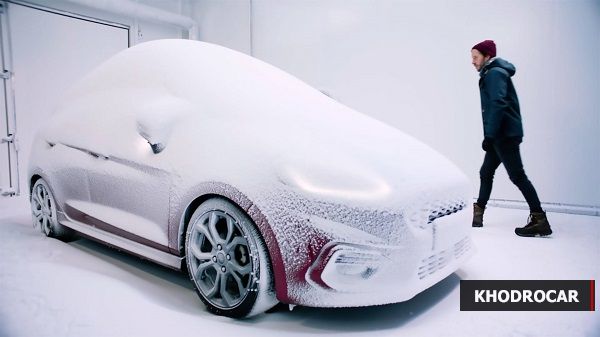FORD’S WEATHER FACTORY CAN SIMULATE BLIZZARDS AND 155-MPH WINDS
Testing tomorrow’s great automotive products takes time, money, and some crazy testing facilities. Proving grounds around the world host an assortment of road conditions – from icy roads to steep, mountainous inclines. Ford is going one step further with its new weather factory – the John Andrews Product Development Centre in Cologne, Germany. It’s not a replacement for taking the latest products to Antarctica and Death Valley, but from the sounds of it, it’s a pretty good stand-in.
The facility offers the first automotive wind tunnel capable of simulating heavy snow and altitudes of 17,060 feet (5,200 meters), which is the same elevation as the Mount Everest North Base Camp. If you and your Escape find yourself at that height, you may have taken a wrong turn. The facility can simulate a wide range of temperatures – from -40 degrees Fahrenheit (-40 Celsius) to 131 degrees Fahrenheit (55 degrees Celsius). The facility can also produce up to 95 percent humidity. Sounds like a typical spring day in Michigan. The facility can test up to ten vehicles simultaneously.

"The vast range of punishing simulation tests will enable Ford drivers to be confident their vehicles can handle whatever climate zone they live in,” said Joe Bakaj, vice president, Product Development, Ford of Europe. "Travelling to the four corners of this building is like taking a trip to the four corners of the world, and our engineers will do that around the clock, every day, to continue to develop future best-in-class vehicles.”
Ford will put its vehicles through a gauntlet of weather simulations to test safety and durability, comfort, electrical performance, braking, trailer towing, cabin heating, and air condition. Engineers will analyze the effects of high-speed winds on exterior parts, see how fast a windshield can defrost, and make sure seals keep rain and snow out of the vehicle.
"We can see how windshield wipers function in Arctic temperatures, how engine performance changes in extreme heat and cold, and even how much snow falls on the driver’s head when they open the door. It’s an engineer’s dream,” said Michael Steup, project manager, Environmental Test Centre, Ford of Europe.
Simulating all those weather conditions takes a lot of power – 11 megawatts of electricity to be precise. That’s enough power to operate a small town of 2,400 people. Ford, however, gets its energy from a fully renewable, environmentally-friendly source from RheinEnergie that sources the power in Scandinavia.
Source: Motor 1
Latest News


